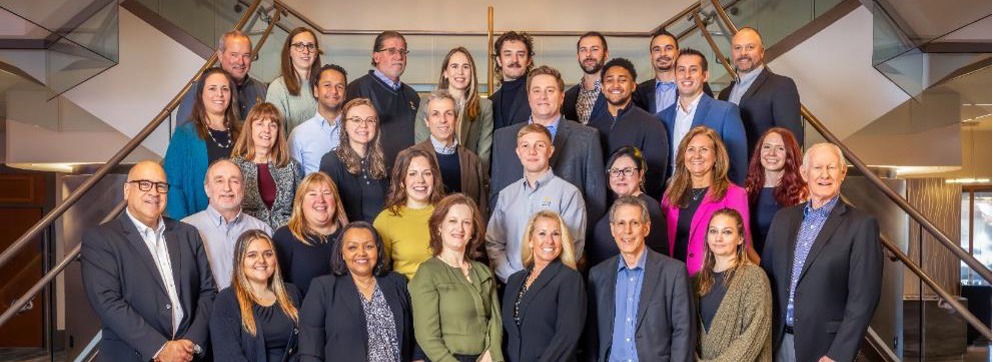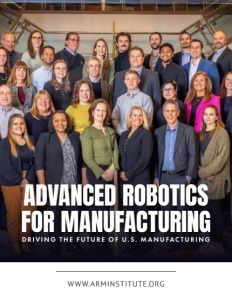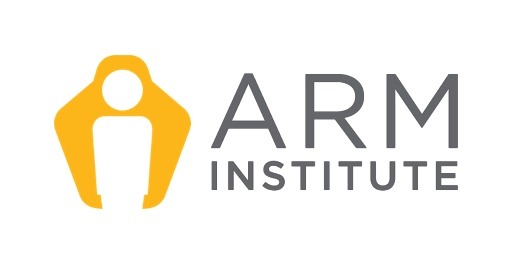Driving the Future of U.S. Manufacturing
The Robotics and AI Mission
The future of American manufacturing is being shaped today in Pittsburgh, Pennsylvania, where the Advanced Robotics for Manufacturing (ARM) Institute is leading the charge in robotics and artificial intelligence (AI) innovation.
As one of 18 federally funded manufacturing innovation institutes under the Manufacturing USA network, ARM was founded with a clear mission: to ensure that the United States remains a global leader in manufacturing by making advanced technologies more accessible and by cultivating the skilled workforce required to power them.
Since opening its doors in 2017, the nonprofit consortium has grown to include more than 460 member organizations—ranging from large manufacturers and defense contractors to universities, start-ups, and workforce partners. Together, they are tackling some of the industry’s most pressing challenges, including labor shortages, outdated processes, and the need for modernization across diverse sectors. To date, ARM has completed nearly 150 funded projects, demonstrating its capacity to accelerate practical solutions and deliver real-world impact.
From Pandemic Response to Production Innovation
While the ARM Institute focuses on long-term advancements, some of its most visible contributions have come during times of crisis. At the height of the COVID-19 pandemic, when the U.S. faced a shortage of personal protective equipment, ARM members quickly mobilized to develop robotic systems capable of assembling masks at scale.
“That project captured what we’re about,” explains Susie, an ARM Institute representative. “We bring members together to solve problems that manufacturers can’t always tackle on their own. Our role is to move solutions to a prototype stage so industry can adapt and adopt them efficiently.”
Similar collaborative projects have addressed automation in industries where adoption has historically lagged, such as casting and forging, apparel, and even the repair of military equipment. These initiatives demonstrate how robotics and AI are transforming not just high-tech sectors, but also traditional industries critical to U.S. competitiveness.
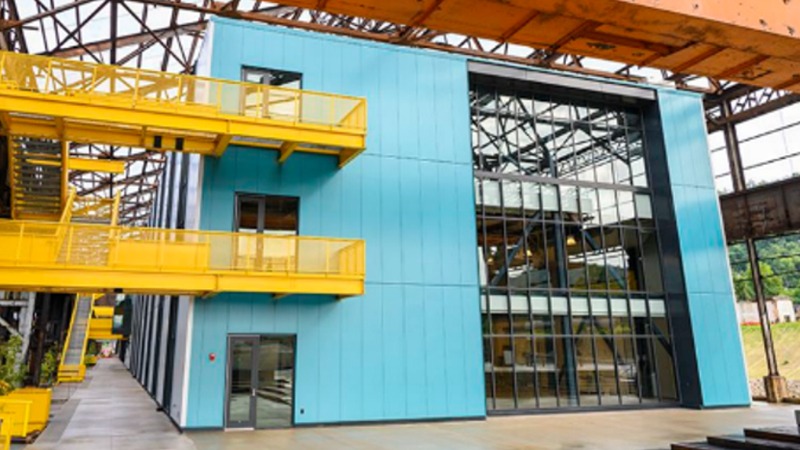 Workforce: Solving the Skills Gap
Workforce: Solving the Skills Gap
For all the promise of automation, one of the largest challenges in American manufacturing is not technological but human. The sector continues to face a severe shortage of skilled workers, exacerbated by the so-called “silver tsunami” as aging employees retire.
To address this, the ARM Institute launched RoboticsCareer.org, a first-of-its-kind national resource for training and career development in advanced manufacturing. The platform now hosts more than 17,000 training programs across the U.S. and Puerto Rico, ranging from community colleges to university degrees, and lists 1,500–2,000 new jobs daily. A built-in skills-matching tool helps job seekers identify pathways into high-demand fields such as robotics programming, systems integration, and maintenance.
“Workforce development is central to our mission,” says Susie. “Technology alone isn’t enough—manufacturers need access to skilled talent who can operate and manage these systems. We’re making it easier for people to find training and career opportunities in robotics and advanced manufacturing, which is vital for keeping production here in the U.S.”
Artificial Intelligence: Promise and Practicality
AI is rapidly reshaping global industries, and manufacturing is no exception. Still, adoption has been uneven. While many companies have embraced AI for back-office functions such as supply chain forecasting, integration on the factory floor presents unique challenges—particularly when older equipment lacks the sensors and systems needed for data collection.
To overcome this barrier, ARM is exploring the use of synthetic data creation and digital twinning—tools that allow manufacturers to simulate environments, generate artificial datasets, and test AI models without interrupting production.
The most promising applications of AI today include inspection systems, where advanced vision technologies now detect defects with remarkable precision, and mobility solutions, such as automated mobile robots (AMRs) and drones that can navigate factory floors and conduct inspections.
“These are not just flashy ideas—they’re practical solutions that make workplaces safer and more productive,” Susie notes. “The advances in vision and mobility, in particular, have the power to transform how manufacturers approach quality control and efficiency.”
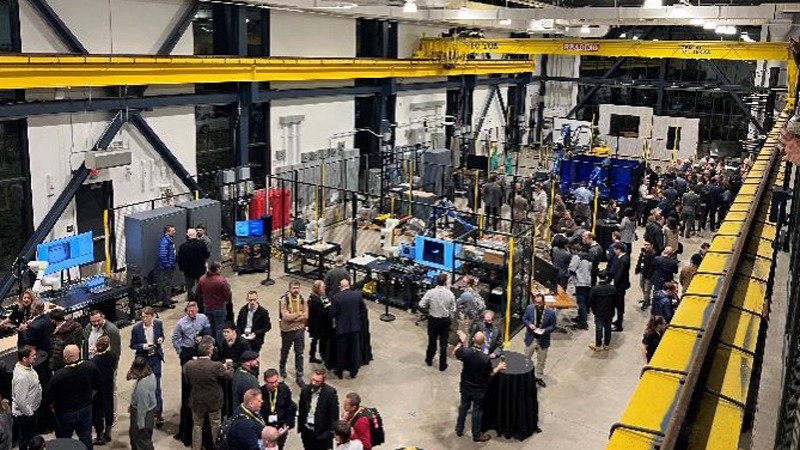 Events and Industry Collaboration
Events and Industry Collaboration
To ensure that its members and the broader industry stay connected to innovation, the ARM Institute actively participates in major events. Highlights include Automate, North America’s largest showcase of robotics and automation solutions; the Robotics Summit, which explores emerging technologies; and the International Manufacturing Technology Show (IMTS), scheduled for 2026 in Chicago.
“These conferences are critical for building awareness,” Susie explains. “They give manufacturers hands-on exposure to technologies that may seem abstract otherwise and allow for peer-to-peer networking that sparks collaboration.”
Roadmap for the Future
Looking ahead, the ARM Institute is sharpening its focus on human-robot collaboration, recognizing that productivity gains will come not from replacing workers but from augmenting them. By designing systems that support operators, rather than eliminate them, ARM is building a more sustainable model of automation.
At the same time, the institute is working to expand RoboticsCareer.org beyond robotics to include other advanced manufacturing technologies. A new AI competency framework is also under development, intended to guide employers, educators, and workers on the skills most in demand.
Another priority is supporting critical yet underappreciated industries such as casting and forging, which form the backbone of supply chains for aerospace, automotive, and defense. By bringing more robotics and AI into these environments, ARM hopes to boost efficiency and safety while strengthening domestic production capacity.
“Over the next two years, our goal is to continue bridging the gap between cutting-edge research and everyday manufacturing,” Susie says. “We want to ensure that American companies—big and small—have access to the tools and people they need to compete globally.”
The Power of Partnership
The ARM Institute’s consortium model is at the heart of its success. With members spanning Fortune 500 corporations, universities, community colleges, start-ups, and government partners, the institute acts as a neutral convener, helping organizations pool expertise, share risk, and accelerate innovation.
“It’s not just about technology,” Susie emphasizes. “It’s about creating an ecosystem where solutions can be developed collaboratively and then deployed into real manufacturing environments. No single organization can tackle these challenges alone.”
A Vision for U.S. Manufacturing
As the manufacturing sector grapples with globalization, supply chain uncertainty, and relentless technological change, the ARM Institute stands as a model of resilience and foresight. By aligning innovation with workforce development, and by bridging the divide between research and implementation, the institute is laying the foundation for a more productive, more secure, and more competitive U.S. manufacturing base.
From pandemic response projects to the creation of the nation’s largest robotics training database, ARM’s work underscores the role that collaboration plays in advancing American industry. And as robotics, AI, and human ingenuity converge, the institute’s mission—to empower manufacturers of all sizes with advanced technologies and skilled talent—has never been more relevant.
“Manufacturing is the backbone of our economy,” Susie reflects. “By investing in robotics, AI, and the people who power them, we’re ensuring that this backbone remains strong for generations to come.”
AT A GLANCE
Advanced Robotics for Manufacturing
What: One of 18 federally funded manufacturing innovation institutes under the Manufacturing USA network
Where: Pittsburgh, Pennsylvania
Website: www.arminstitute.org
